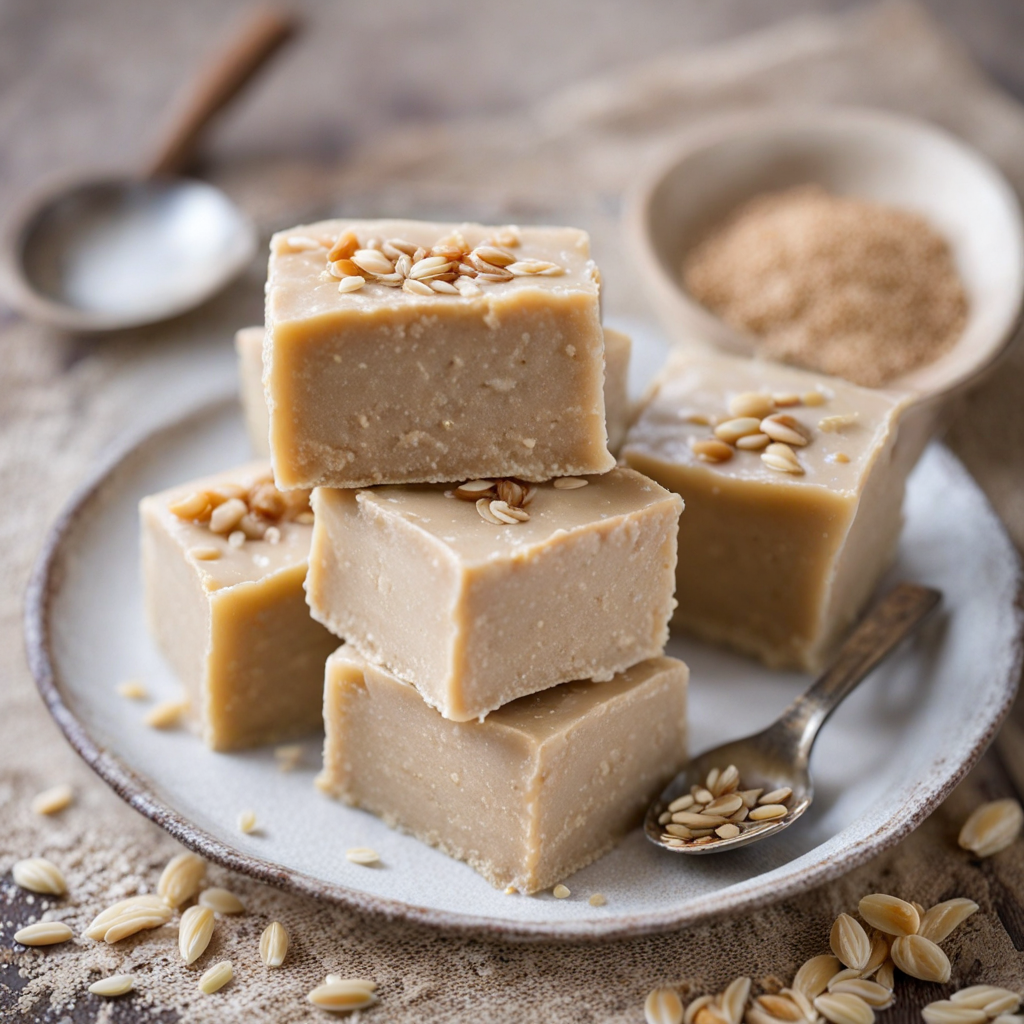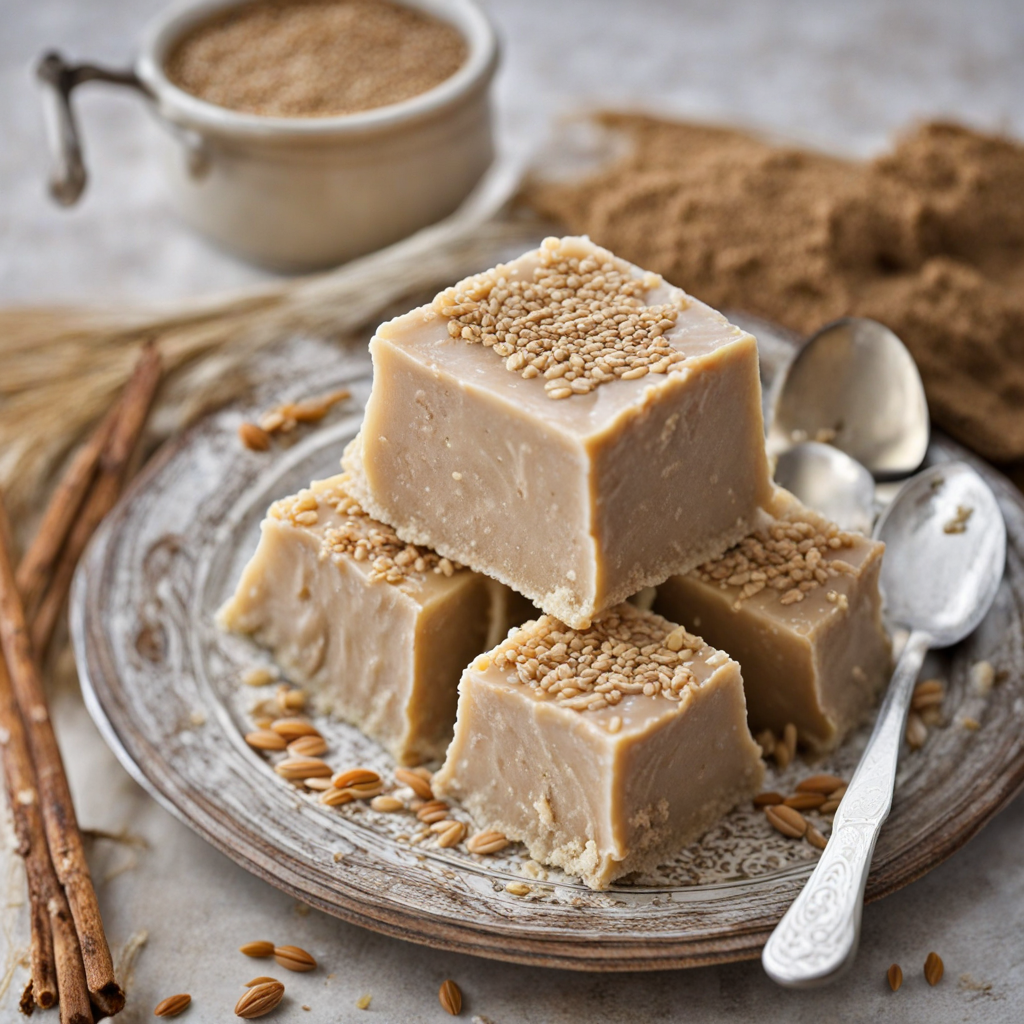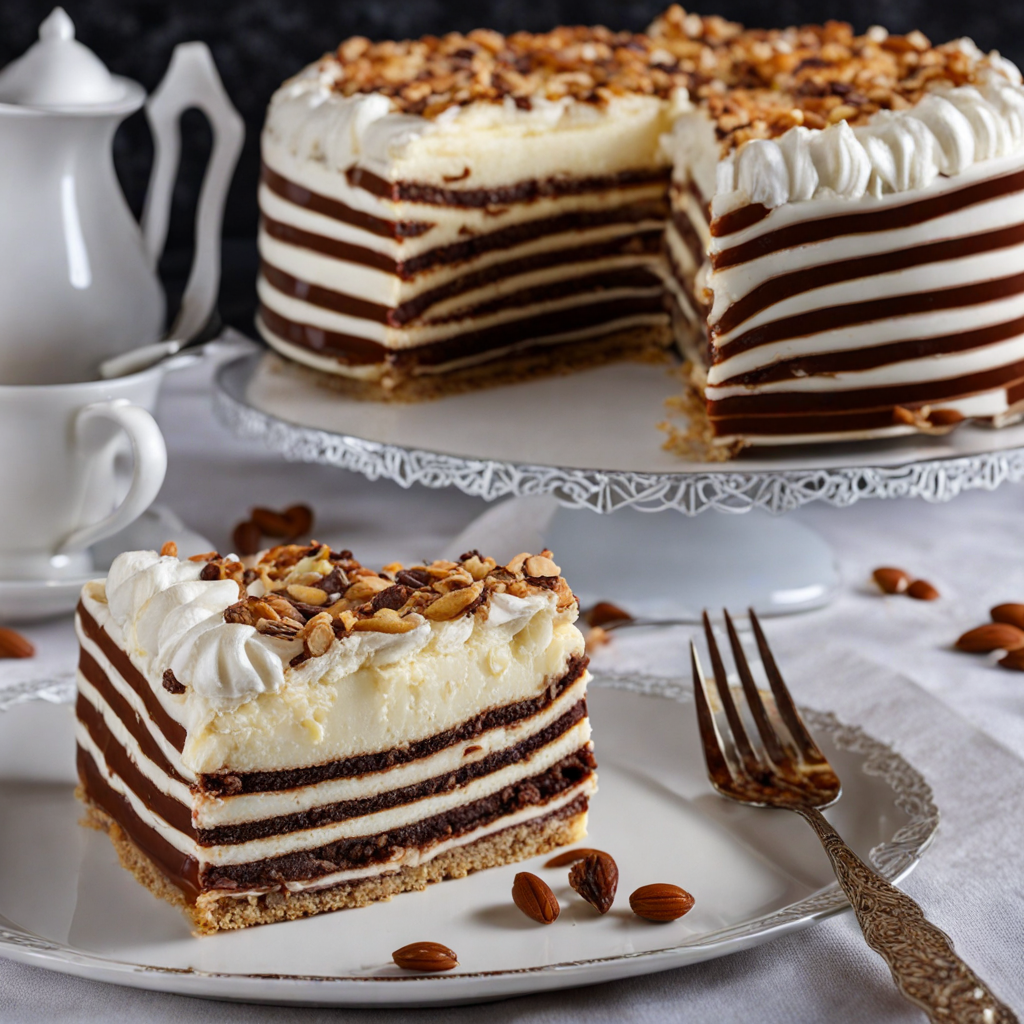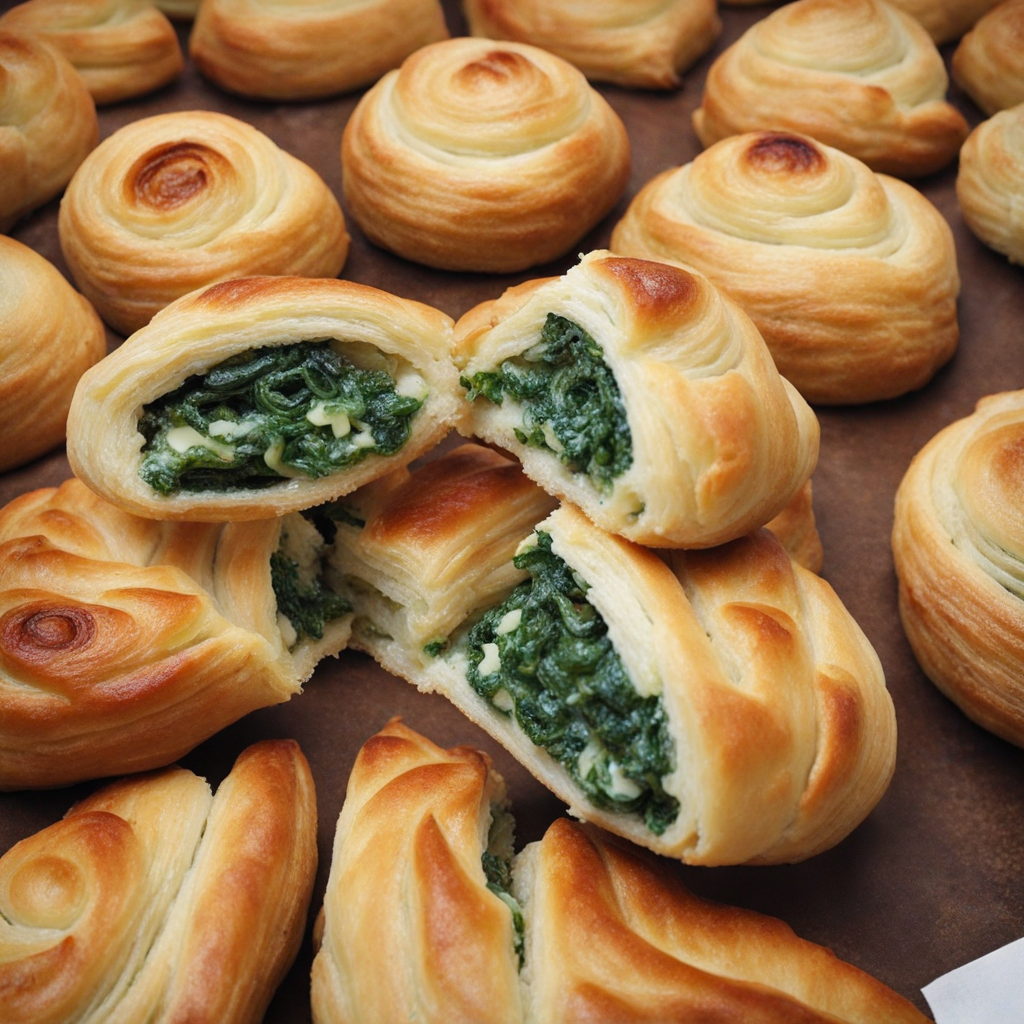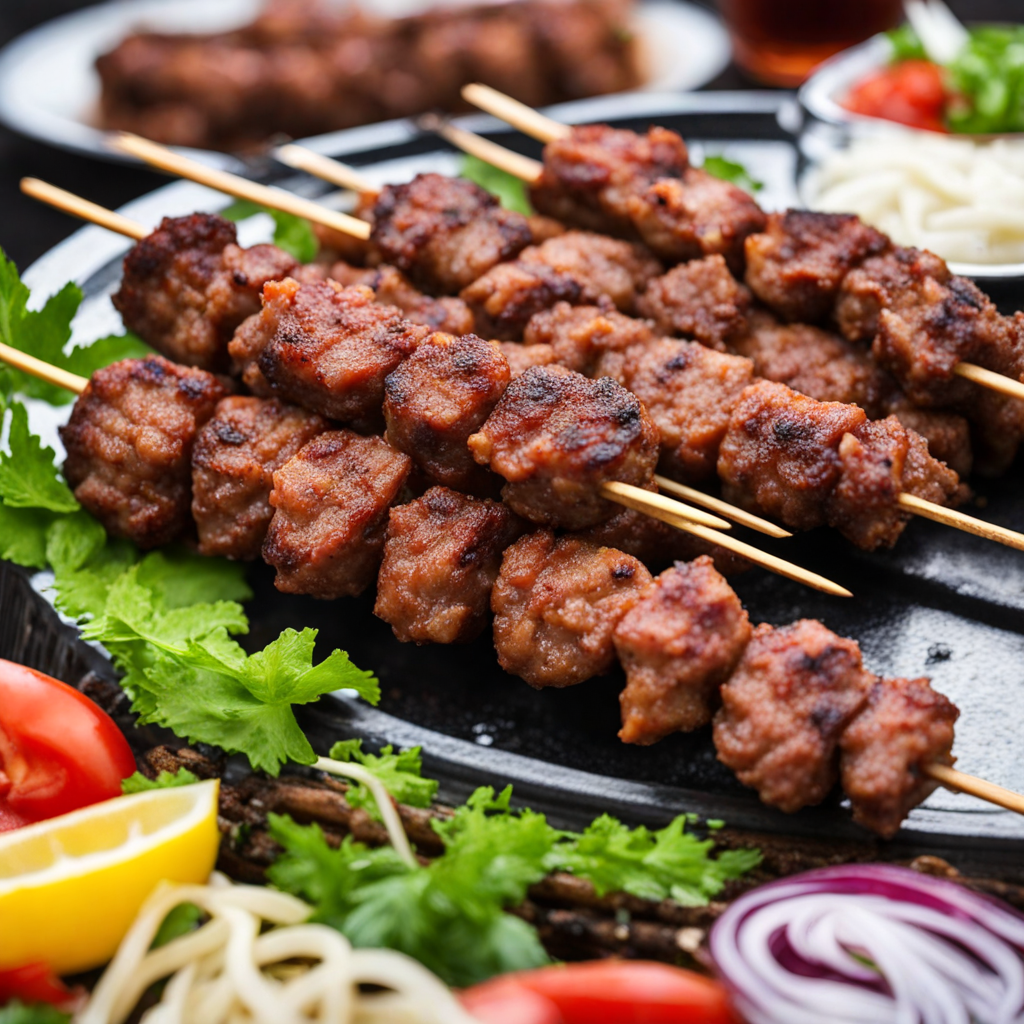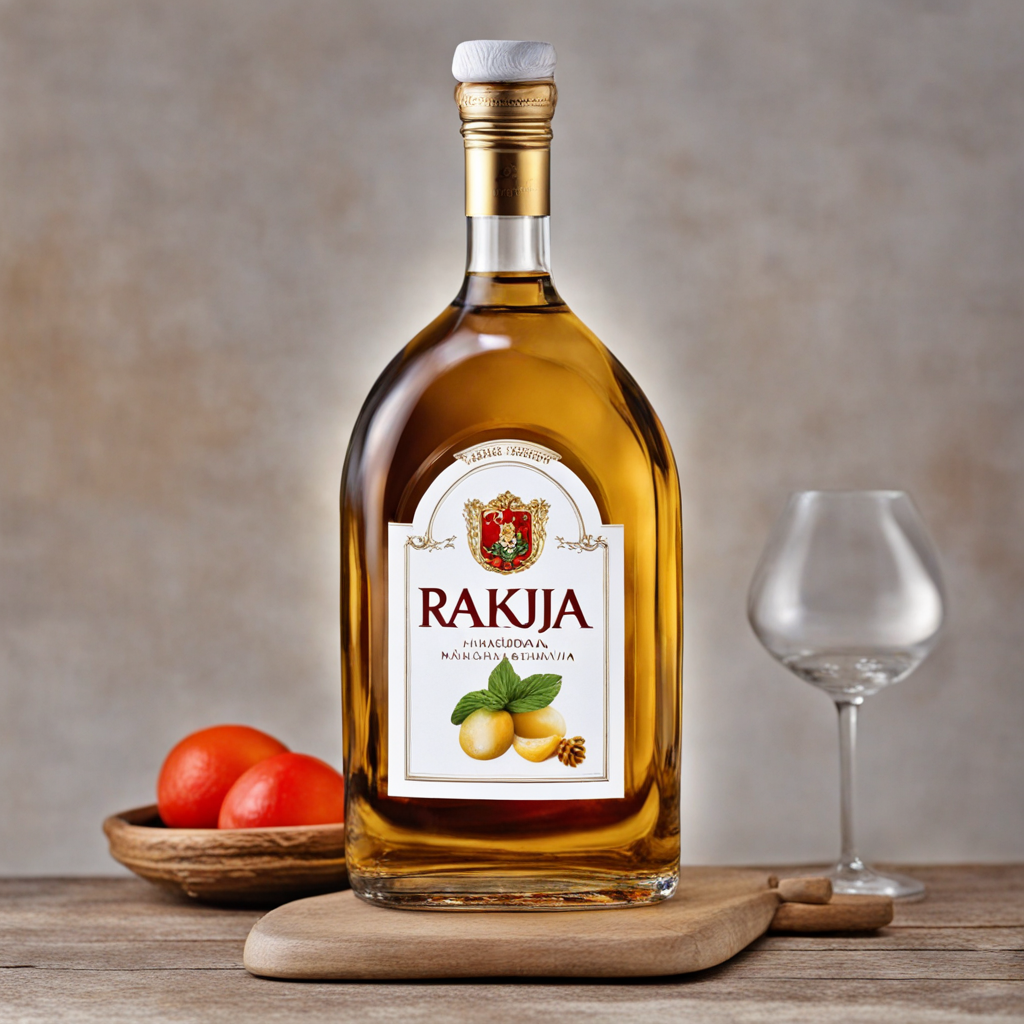Macedonian Halva
Macedonian Halva is a delightful sweet treat that embodies the rich culinary traditions of North Macedonia. This confection is primarily made from tahini, which is ground sesame seeds, and sugar, resulting in a creamy, nutty base that is both rich and satisfying. The texture is unique, combining a crumbly yet smooth consistency that melts in your mouth with each bite. The natural flavor of sesame is enhanced with various ingredients such as chocolate, nuts, or fruits, allowing for a delightful range of taste experiences. Each variation offers its own distinct twist, making it an exciting treat for adventurous palates. What sets Macedonian Halva apart is its preparation method, which often involves slow cooking to achieve the perfect balance of flavors and textures. Traditionally, the mixture is poured into molds and left to cool, allowing it to set into a dense, sliceable form. This process not only enhances the overall flavor but also creates a satisfying chewiness that complements the sweetness. The addition of local ingredients, such as honey or spices, further elevates this dessert, making it a cherished staple in many Macedonian households. Enjoyed as a snack or a dessert, Macedonian Halva is often paired with a cup of strong coffee or tea, creating a harmonious balance between the sweet and bitter flavors. It can be found in various forms, from simple blocks to intricately layered designs adorned with nuts or drizzled with chocolate. Whether shared among friends or savored solo, tasting Macedonian Halva offers a glimpse into the heart of North Macedonian hospitality and culture, inviting you to indulge in its rich, sweet legacy.
How It Became This Dish
The Story of Македонска халва: A Sweet Legacy of North Macedonia Introduction Македонска халва, or Macedonian halva, is a beloved confection that embodies the rich culinary heritage of North Macedonia. This sweet treat, made primarily from tahini (sesame seed paste) and sugar, has deep roots in the region's history, culture, and social fabric. Its evolution over time reflects the broader changes in the Balkans, influenced by various cultures and traditions that have mingled in this vibrant area. Origins The origins of halva can be traced back to the Middle Eastern regions, where the earliest versions were made from grains such as wheat or barley. The name "halva" itself is derived from the Arabic word "ḥalwā," meaning "sweet." This dessert spread through trade routes and migrations, adapting to local ingredients and preferences. By the time it reached the Balkans, halva had evolved into the sesame-based version that we recognize today. In North Macedonia, the tradition of making halva became particularly popular during the Ottoman Empire's reign (14th to 20th centuries). The Ottomans brought with them a variety of culinary influences, introducing new ingredients and methods that transformed the local food landscape. During this period, sesame seeds became more widely cultivated, and tahini emerged as a favored ingredient, paving the way for the beloved Macedonian halva. Cultural Significance In North Macedonia, Македонска халва is more than just a sweet treat; it is a symbol of hospitality, celebration, and cultural continuity. Traditionally, halva is served during special occasions such as weddings, religious holidays, and family gatherings. Its preparation and sharing often accompany rituals that strengthen communal ties and family bonds. The act of making halva can also be seen as a form of artistry, with skilled confectioners using time-honored techniques to create the perfect texture and flavor. The flavor profile of Macedonian halva is distinctively nutty and sweet, often enhanced with additional ingredients like nuts, cocoa, or even dried fruits, reflecting the region's agricultural bounty and diverse culinary influences. Moreover, halva plays a significant role in various religious and cultural practices. In the Orthodox Christian tradition, it is often prepared during Lent as a vegan alternative to richer desserts. It is also shared as a gesture of goodwill and blessing during important life events, reinforcing its place in the social fabric of North Macedonian life. Development Over Time As North Macedonia progressed through the 20th century, the production and consumption of Македонска халва evolved significantly. The tumultuous political landscape, marked by wars, shifts in governance, and the eventual breakup of Yugoslavia in the 1990s, influenced culinary practices. During this period, there was a resurgence of interest in traditional foods as a means of preserving cultural identity. With the establishment of the independent Republic of North Macedonia in 1991, there was a renewed emphasis on national heritage, including culinary traditions. Artisans began to promote Macedonian halva as a key part of the national identity, and local producers sought to revive traditional recipes and methods, often using locally sourced ingredients. This movement not only helped to preserve the tradition but also fostered a sense of pride among Macedonians. The late 20th and early 21st centuries saw the rise of artisanal food production, with small-scale producers crafting halva that emphasized quality and authenticity. This shift catered to a growing consumer demand for traditional and ethically produced foods. As a result, Macedonian halva became more widely available, both within the country and abroad, finding its way into international markets. Modern Interpretations Today, Македонска халва continues to thrive, with both traditional and modern interpretations available. While the classic version remains popular, innovative chefs and confectioners experiment with new flavors and presentations. Some incorporate spices like cardamom or cinnamon, while others create layered desserts featuring halva as a key component. Macedonian halva has also garnered attention in the global culinary scene, often appearing in international food festivals and cultural exhibitions. Its unique flavor and texture have attracted food enthusiasts eager to explore the culinary diversity of the Balkans. Moreover, the rise of health-conscious eating has led to an increased interest in halva, as it is rich in nutrients and can be enjoyed as a guilt-free indulgence. Conclusion Македонска халва is not merely a sweet dish; it is a testament to the resilience and creativity of the Macedonian people. Its journey from ancient origins through the complexities of history to its contemporary status highlights the dynamic interplay of culture, tradition, and identity. As North Macedonia continues to navigate the challenges and opportunities of the modern world, Македонска халва remains a cherished symbol of its culinary heritage—a sweet legacy that connects generations, celebrates community, and invites all to partake in its rich flavors. In the ever-evolving narrative of food, halva stands as a delicious reminder of the past while embracing the future, a bridge that links the stories and experiences of those who have come before with those who are yet to come.
You may like
Discover local flavors from North Macedonia


